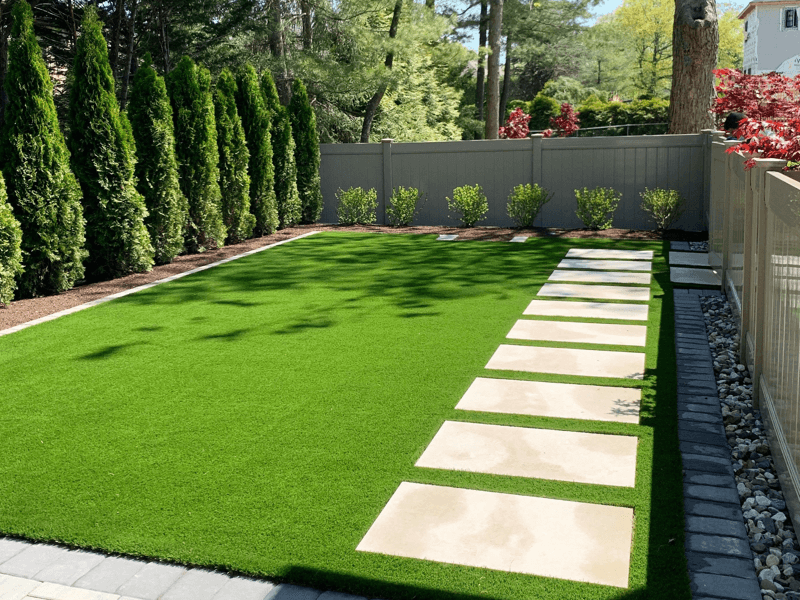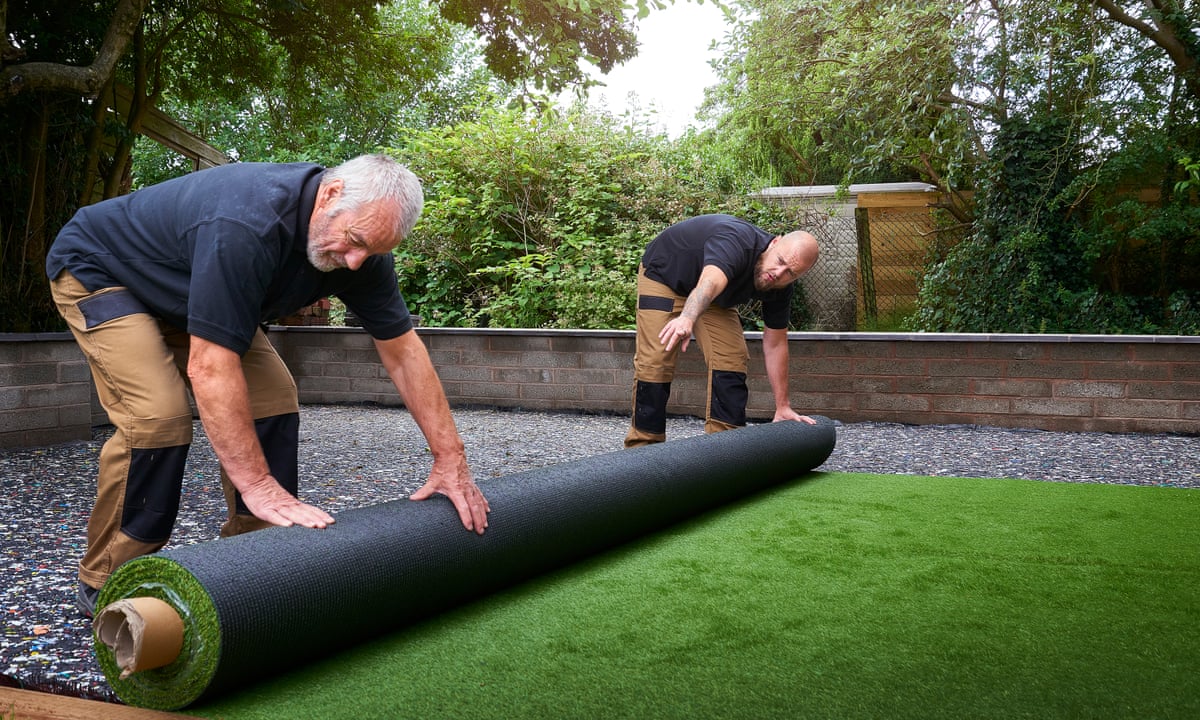Luxury Arizona Turf Installation Solutions for Homes and Businesses
Luxury Arizona Turf Installation Solutions for Homes and Businesses
Blog Article
Explore the Environmental Perks of Opting for Synthetic Grass Solutions
The adoption of artificial grass remedies presents an engaging opportunity to address pushing ecological obstacles. By dramatically lowering water use and lessening the application of dangerous chemicals, these options not only promote lasting landscaping but additionally shield regional environments. The reduced carbon impact linked with lowered maintenance tasks adds to a more sustainable technique to land administration. However, the implications of these benefits expand beyond plain conservation efforts, questioning concerning their lasting influence on environment preservation and total environmental equilibrium. Discovering these dimensions exposes an intricate interplay worth taking into consideration.
Water Conservation Benefits
One of the most significant benefits of man-made grass is its ability to preserve water. In comparison, synthetic turf does not require watering, substantially decreasing the overall need for water resources.
By eliminating the demand for regular watering, fabricated grass contributes to sustainable landscape techniques and helps alleviate the ecological influence of extreme water consumption. The conservation of water prolongs to the decrease of drainage, which can lead to dirt erosion and waterway pollution.
Furthermore, the installment of artificial turf enables communities and house owners to assign water resources much more effectively, concentrating on crucial usages such as alcohol consumption water and farming. The change in the direction of synthetic grass not only advertises liable water use however additionally straightens with more comprehensive ecological objectives targeted at preserving natural resources.
As communities significantly focus on sustainability, the water preservation benefits of synthetic turf present an engaging instance for its fostering in industrial and property landscaping projects.
Decreased Chemical Use
The shift to synthetic grass considerably decreases the dependence on chemical treatments typically utilized in all-natural turf maintenance. Typical grass management normally includes the application of herbicides, fertilizers, and chemicals to advertise growth and control pests. These chemicals can present risks to human wellness, local wild animals, and the environment, adding to soil and water contamination.
On the other hand, synthetic grass gets rid of the need for these unsafe compounds. When installed, it needs minimal maintenance, mainly including routine cleansing and seldom infill replenishment. This decrease in chemical usage not just benefits the instant setting but additionally contributes to wider eco-friendly security. By minimizing the release of artificial compounds into the environment, synthetic grass promotes healthier soil and water supply.
Additionally, the lack of chemical drainage related to synthetic grass setups assists shield neighborhood rivers from air pollution, sustaining water life and keeping biodiversity. Turf installation phoenix az. As neighborhoods progressively prioritize sustainable methods, going with man-made grass provides a sensible remedy that straightens with environmental preservation objectives. Via this change, home proprietors can take pleasure in rich eco-friendly spaces without jeopardizing environmental wellness, leading the way for an extra lasting future
Lower Carbon Footprint

In addition, the installation of fabricated lawn can lead to significant water conservation. Natural yards call for considerable amounts of water for watering, which not just contributes to the carbon impact connected with water extraction and therapy but likewise pressures regional water sources. In contrast, synthetic grass requires marginal maintenance, requiring no watering, therefore considerably minimizing water use and its linked power prices.
Additionally, the durability of man-made lawn adds to its lower carbon impact. With a lifespan of as much as 15 years or more, the requirement for constant replacements is decreased, leading to much less waste and lower energy consumption in manufacturing and getting rid of standard turf alternatives. On the whole, synthetic grass provides a lasting option for ecologically aware landscaping.
Environment Conservation
Environment preservation is a crucial factor to consider in the argument over landscape design selections, especially when comparing synthetic grass to all-natural lawn. All-natural yard yards commonly call for substantial maintenance, including making use of plant foods, herbicides, and pesticides, which can adversely affect local communities. These chemicals can seep right into the soil and waterways, harming native plants and animals and interrupting local habitats.
On the other hand, synthetic grass offers an opportunity to lower the ecological impact of landscaping. By selecting artificial yard, property owners can lessen the disruption of all-natural environments connected with conventional grass care practices. Synthetic lawn removes the demand for unsafe chemicals, therefore protecting close-by wildlife and maintaining the honesty of surrounding ecological communities. Moreover, the installation of synthetic grass can bring about the conversion of previous turf locations right into more biodiverse landscapes, such as pollinator yards or native plant areas, which can support regional wild animals.
Inevitably, the change to man-made grass not only preserves water and lowers maintenance initiatives yet also promotes a more harmonious relationship between human activities and the natural surroundings, advertising habitat conservation at the same time.
Long-Term Sustainability
Lasting sustainability is a critical aspect in examining the benefits of synthetic grass over traditional grass lawns. Among one of the most substantial benefits of fabricated turf is its toughness; it can last up to 15-20 years with very little maintenance, whereas natural lawn needs constant reseeding and replacement. This longevity decreases the demand for continuous sources, such as water, plant foods, and chemicals, which are necessary for maintaining a healthy grass yard.
In addition, man-made lawn contributes to a decrease in carbon discharges associated with lawn care tools. Conventional lawns frequently need gas-powered mowers, trimmers, and blowers, all of which add to air pollution. Turf installation phoenix az. In contrast, synthetic grass eliminates the demand for such tools, advertising a cleaner environment
Moreover, the manufacturing of synthetic grass resource increasingly utilizes recycled products, improving its sustainability profile. As manufacturers take on environmentally friendly techniques, the ecological footprint of synthetic grass proceeds to diminish.

Final Thought
The fostering of synthetic grass solutions presents considerable ecological benefits, consisting of substantial water conservation, decreased reliance on dangerous chemicals, and a reduced carbon footprint. Additionally, synthetic grass help in protecting natural environments by lessening land disturbance and advertising lasting sustainability with using resilient products. Jointly, these variables emphasize the possibility of synthetic turf to contribute positively to ecological health and wellness and offer a viable option to standard landscape design methods in a significantly resource-conscious globe.
In comparison, fabricated lawn does not need watering, considerably reducing the total need for water resources. By lessening the launch of synthetic compounds right into the environment, synthetic turf advertises healthier dirt and water systems.
Moreover, the setup of artificial published here lawn can result in substantial water preservation. In comparison, fabricated grass requires very little upkeep, needing no watering, thus considerably lowering water usage and its connected energy expenses.

Report this page